After breakfast on March 20th at the Seneca Nation’s Tonawanda Territory, we all got into cars and rode to Middleport. If we had walked from the Tonawanda Territory to our end point in Albion that day, we would have walked thirty miles. My opinion on walking thirty miles in one day is “let’s not and say we did!
Visiting the Seneca Nation’s Tonawanda Territory was a good experience for me. I am very grateful for the generous hospitality that I received there. I was reminded that the Senecas (who call themselves Onöndowága,’ meaning “People of the Great Hill”) have a land claim on Grand Island. Their name for Grand Island is “Go-Weh No-geh. I said, “I’d be happy to give it to you!”
Everyone laughed at my eagerness to give away Grand Island, which I suppose I can’t do since I don’t own even a small part of it.
One interesting note: the room where I spent the night is used also as a classroom, where children are taught the Seneca language. According to Wikipedia, there are currently only about 200 speakers of the Seneca language. It is an Iroquoian language and is linguistically related to other Iroquois languages. Certainly, the efforts of the Indian boarding schools, which I described in a previous post, has had a terrible effect on indigenous cultures throughout the United States and Canada. According to James Estes of the National Clearinghouse for Bilingual Education, approximately 300 languages were spoken in North America prior to the arrival of Christopher Columbus. After that event and the arrival of other Europeans (which is also termed the “European Invasion”), half of those languages are now extinct and many others are described as “moribund,” meaning that they have few speakers and all of those speakers are elders.
The most widely spoken indigenous language in North America is Navajo with 148,530 speakers. Navajo was used as a code during World War II. The Germans never broke that code. Other widely spoken languages are Ojibwa, Western, with 35,000 speakers; Dakota with 20,355 speakers; Choctaw with 17,890 speakers; Apache, Western, with 12,693 speakers; Cherokee with 11,905 speakers; Papago-Pima with 11,819 speakers; and Yupik, Central, with 10,000 speakers.
It is my hope that more work can be done to preserve endangered languages, that more schools are opened for people to learn to speak and to communicate in those languages.
As I walked into Orleans County, I thought about the little school where the Seneca language is taught to children in the Tonawanda Territory.
I was also fascinated by my surroundings. We walked past dormant corn fields and horses running in fenced-in fields, and broken down barns. We were never far from the Erie Canal. It didn’t take us too long to walk into Medina. An old town with many beautiful structures, Medina, like other towns in this area, were boom towns in the years after the Erie Canal was built and before the Welland Canal was built. We walked through the streets of Medina and were then out of town, back on Route 31, headed east. Three miles west of Albion, we ate our lunch.
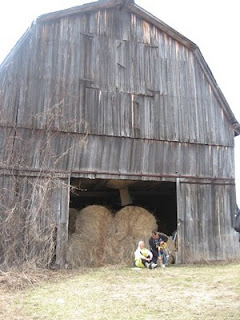 We arrived in Albion and found that the church where we were to spend the night was locked. Before long, a locksmith had been called. The locksmith, who was also a photographer, came to open the church for us. The church where we were to stay was called the Pullman Memorial Unitarian Universalist Church. It is an historic church that was built by George Pullman as a memorial to his parents. The church was dedicated on January 31st, 1895. Two of George Pullman’s brothers participated in the service. Both the brothers, Dr. Royal Henry Pullman (1826-1900) and Dr. James M. Pullman (1836-1903), were Universalist ministers.
We arrived in Albion and found that the church where we were to spend the night was locked. Before long, a locksmith had been called. The locksmith, who was also a photographer, came to open the church for us. The church where we were to stay was called the Pullman Memorial Unitarian Universalist Church. It is an historic church that was built by George Pullman as a memorial to his parents. The church was dedicated on January 31st, 1895. Two of George Pullman’s brothers participated in the service. Both the brothers, Dr. Royal Henry Pullman (1826-1900) and Dr. James M. Pullman (1836-1903), were Universalist ministers.
George Pullman (March 3, 1831 – October 19, 1897) was famous for being an inventor and an industrialist. He invented the Pullman sleeping car, which, according to Wikipedia, were modeled after the sleeping arrangements in the packet boats that traveled the Erie Canal. The first sleeping car was finished in 1864. People paid considerably more money to ride in sleeping cars than in coach. A Pullman sleeping car even carried the body of President Abraham Lincoln to Springfield, Illinois, for burial.
George Pullman hired many people to work in the sleeping car, providing excellent service. Many of the employees were newly freed slaves from the south. Pullman also built a “company town” for his employees to reside. His company owned everything in the town. According to Wikipedia, the town was run almost like a feudal city state.
George Pullman, however, became infamous in the mid-1890s, when the workers went on strike. Their complaint was that, in the wake of a bad economy, their wages had been cut and their working hours had been increased. Also, jobs had been cut. At the same time, there had been no changes in rents and prices in the company town, where you shopped at the only store around (the company store). The strike was violently crushed.
The Pullman strike was a sad event in the history of U.S. labor relations.
But… back to the church…
Inside the church, we held an interfaith afternoon prayer service to commemorate the seventh anniversary of the U.S. launching of the Iraq war. We remembered everyone, both members of the military and civilians, who had lost their lives in the war. We also held the prayer service in solidarity and support of the march that was held in Washington, D.C. Later, I found out that Cindy Sheehan and seven others had been arrested on the sidewalk in front of the White House. Six persons, including Cindy Sheehan, were taken to jail and held until they were arraigned on Monday, March 22nd, because they were from “out of town.”
Our hosts in Albion prepared a delicious pot luck dinner.The pastor, whose name is Kelly, offered a beautifully worded prayer about hands. I enjoyed sitting with new friends, including Margaret and Monica, and sharing this wonderful meal. I don’t know how it is but, at every place we visited, I was always served my favorite foods!
The next morning, we were served a wonderful breakfast, courtesy of Gerald and others. Feeling well-fed and happy, we continued our trek east and stopped for lunch at the First Presbyterian Church in Holley. My first introduction to Holley came in the form of a Holley police car. It seems that a few walkers fell behind when they stopped to talk to a woman who had come out of her house when she saw us marching down Route 31. As we were walking into Holley, a police car pulled up beside us. Two walkers hopped out of the back seat. The car left. Shortly afterward, the police car pulled up beside us for a second time. Another walker hopped out of the car. The police car left. Those walkers truly traveled in style!
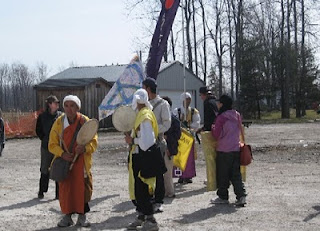
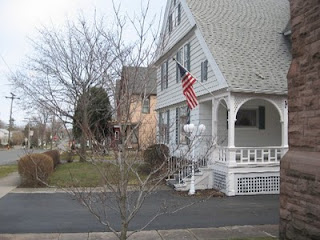
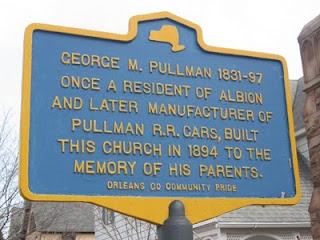
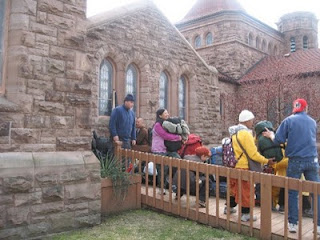
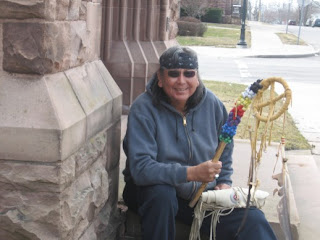
I walked 111 miles with that group. A great experience.